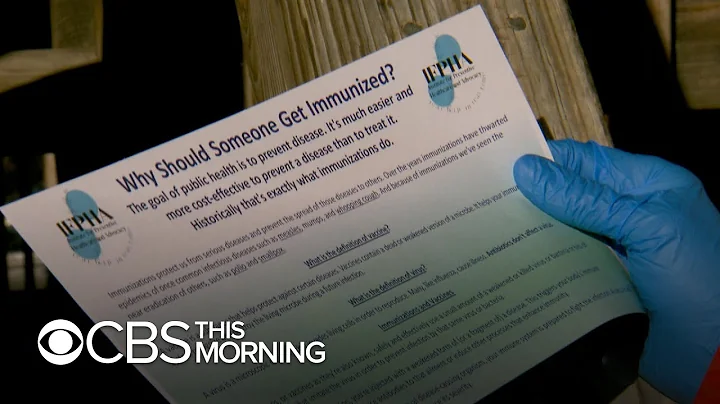Simple Steps to Locate and Fix Your Underground Fence
Table of Contents
- Introduction
- How Underground Fence Systems Work
- Understanding the Power Loop
- Adjusting the Signal Strength
- Testing Your Underground Fence System
- Finding and Fixing Breaks in the Fence
- Using an AM Radio to Locate Breaks
- Making Secure Connections
- Fixing Your Underground Fence
- Conclusion
🐶 Introduction
Having an underground fence for your pets is a convenient way to keep them safe while allowing them the freedom to roam within your property. However, from time to time, you may encounter issues such as beeping sounds and a non-lit loop light, indicating a potential break in the fence. In this article, we will guide you through the process of identifying and fixing breaks in your underground fence system, using simple tools and techniques. With our step-by-step instructions, you'll be able to restore the functionality of your fence and ensure the safety of your furry friends.
🐾 How Underground Fence Systems Work
Underground fence systems rely on a single wire that is buried around the perimeter of your yard. This wire acts as a loop, connecting two terminals of the system. The integrity of this loop is crucial for the proper functioning of the fence. When your pet approaches the boundary with its collar, the system transmits an AM radio signal through the wire. This signal serves as a warning for your pet, either emitting a beep or delivering a gentle shock, based on your settings. It's important to note that the radio signal does not carry high voltage, making it safe for your pets.
🔌 Understanding the Power Loop
The power loop is a vital component of the underground fence system. It ensures that both terminals of the system are intact and facilitates the transmission of the AM signal. To confirm if your power loop is functioning correctly, you can check if the power loop light is on and if there are no beeping sounds. In some cases, the system may not emit a sound, but if you are experiencing issues like a beeping sound or a non-lit loop light, it indicates a problem with the power loop.
🔁 Adjusting the Signal Strength
The signal strength of your underground fence system can be adjusted to accommodate the size of your yard and the distance at which you want your pet to be warned or shocked. Generally, a stronger signal allows for a larger detection area, while a weaker signal signifies a smaller detection area. Adjusting the signal strength is crucial to ensure that your pet receives the warning or shock at the desired distance from the boundary. Consult your system's manual for specific instructions on how to adjust the signal strength.
🔍 Testing Your Underground Fence System
Before attempting to locate and fix any breaks in your underground fence, it's essential to determine if your system is transmitting a signal. To test the system, you will need a scrap piece of wire or a suitable testing tool. Create a loop by connecting the terminals with the testing wire, and check if the loop light turns on and if there are no beeping sounds. If the loop test fails, it indicates a problem with the system's transmission, and you will need to troubleshoot further.
🔎 Finding and Fixing Breaks in the Fence
If your underground fence system fails the loop test or exhibits issues such as beeping sounds, there is likely a break in the fence somewhere in your yard. Locating this break can be challenging without specialized equipment, but we will guide you through a simple method using an AM radio. By tuning the radio to a similar frequency as the system's AM signal, you can detect areas where the wire is intact and areas where the signal is lost. These signal gaps indicate the location of the break in your fence.
📻 Using an AM Radio to Locate Breaks
To use an AM radio for locating breaks in your underground fence, you will need a handheld AM/FM radio or a device with AM radio capabilities. Tune the radio to an AM frequency and position yourself near the wire where you know it is intact and emitting a signal. Slowly adjust the radio's frequency until you hear a pulsing or surging noise that mimics the system's beeping or warning signals. This indicates that the radio is picking up the AM signal, confirming the functional parts of the fence.
🔌 Making Secure Connections
Once you have identified the location of the break in your underground fence, it's crucial to make secure connections to restore the integrity of the loop. Strip back a sufficient length of wire on either side of the break, and twist the exposed wires tightly together. To ensure a stable connection, you can use wire nuts with silicone coating or apply silicone to the wire nuts before securing them. While a watertight connection is preferable, it's not essential, as the radio signal is not affected by moisture.
🔧 Fixing Your Underground Fence
With the break in your fence repaired and the wire connections secure, retest your underground fence system to ensure that the beeping sound has stopped and the loop light is lit. Walk along the boundary of your yard with your AM radio to verify that the AM signal is uninterrupted. If everything is functioning properly, congratulations! You have successfully fixed your underground fence system. Your pets can now enjoy their safe boundaries without any issues.
🏁 Conclusion
Dealing with a broken underground fence can be frustrating, but with the right tools and techniques, you can quickly identify and fix the problem. By understanding how the system works, adjusting the signal strength, and using an AM radio to locate breaks, you can ensure the safety of your pets and maintain the functionality of your underground fence. Remember to make secure connections and test the system after repairs to guarantee its proper operation. With these steps, you'll have a reliable and effective underground fence system in no time.
Highlights:
- Underground fence systems provide a safe way for pets to roam within the property.
- Issues such as beeping sounds and non-lit loop lights indicate potential breaks in the fence.
- Testing the system's transmission and locating breaks can be done using simple tools and an AM radio.
- Making secure wire connections and adjusting the signal strength are crucial for proper fence operation.
- By following the step-by-step instructions, you can fix your underground fence system and ensure your pets' safety.
FAQ
Q: Can I use a different type of radio to locate breaks in the fence?
A: While an AM radio is recommended due to its ability to detect AM signals, you may experiment with other radios that have similar capabilities.
Q: What should I do if I can't find the break in my underground fence?
A: If you are unable to locate the break using the AM radio method, it may be necessary to consult a professional or consider using specialized equipment for underground wire detection.
Q: Are underground fence systems suitable for all types of pets?
A: Underground fences are commonly used for dogs but may not be suitable for all pets, especially those that are easily frightened or have difficulty understanding boundaries. Consult with a pet training professional to determine the best containment solution for your specific pet.
Q: Can I repair the underground fence system without professional assistance?
A: Yes, most underground fence repairs can be done by individuals with basic DIY skills. However, if you are unsure or uncomfortable with electrical repairs, it's recommended to seek professional help.







